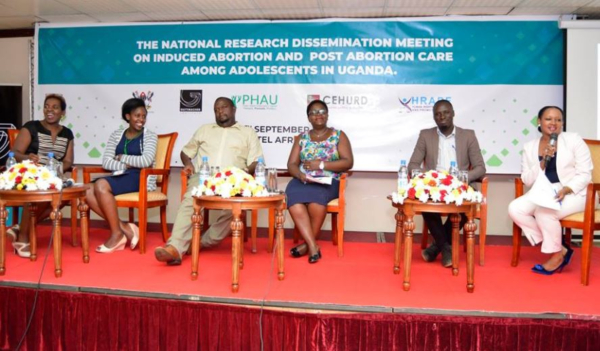
by Elizabeth A Sully, Lynn Atuyambe, Justine Bukenya, Hannah S Whitehead, Nakeisha Blades, Akinrinola Bankole
Contraception 2018; 98(6, December):510-16 https://doi.org/10.1016/j.contraception.2018.07.135
Abstract
Objectives: To provide the first estimate of adolescents’ abortion incidence in Uganda and to assess differences in the abortion experiences and morbidities of adolescent and non-adolescent post-abortion care (PAC) patients.
Study design: We used the age-specific Abortion Incidence Complications Method, drawing from three surveys conducted in Uganda in 2013: a nationally representative Health Facilities Survey (n=418), a Health Professionals Survey (n=147) and a Prospective Morbidity Survey of PAC patients (n=2169). Multivariable logistic and Cox proportional hazard models were used to compare adolescent and non–adolescent PAC patients on dimensions including pregnancy intention, gestational age, abortion safety, delays to care, severity of complications and receipt of post–abortion family planning. We included an interaction term between adolescents and marital status to assess heterogeneity among adolescents.
Results: Adolescent women have the lowest abortion rate among women less than 35 years of age (28.4 abortions per 1000 women 15–19) but the highest rate among recently sexually active women (76.1 abortions per 1000 women 15–19). We do not find that adolescents face greater disadvantages in their abortion care experiences as compared to older women. However, unmarried PAC patients, both adolescent and non-adolescent, have higher odds of experiencing severe complications than non-adolescent married women.
Conclusions: The high abortion rate among sexually active adolescents highlights the critical need to improve adolescent family planning in Uganda. Interventions to prevent unintended pregnancy and to reduce unsafe abortion may be particularly important for unmarried adolescents. Rather than treating adolescents as a homogenous group, we need to understand how marriage and other social factors shape reproductive health outcomes.
Implications: This paper provides the first estimate of the adolescent abortion rate in Uganda. Studies of adolescent abortion and reproductive health must account for sexual activity and marital status. Further, interventions to address unintended pregnancy and unsafe abortion among unmarried women of all ages in Africa should be a priority.
SEE ALSO: ARTICLE AND PHOTO, 12 September 2018



